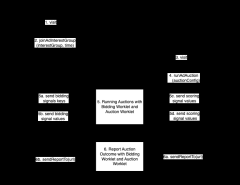Authors: Gabriel Spadon, Jay Kumar, Matthew Smith, Sarah Vela, Romina Gehrmann, Derek Eden, Joshua van Berkel, Amilcar Soares, Ronan Fablet, Ronald Pelot, Stan Matwin
Published on: October 29, 2023
Impact Score: 8.35
Arxiv code: Arxiv:2310.18948
Summary
- What is new: This study introduces an innovative model to predict vessel trajectories using AIS data to prevent collisions with whales, incorporating a novel combination of Bi-LSTM, convolutional layers, and a position-aware attention mechanism.
- Why this is important: The growth in maritime transportation poses a significant threat to large whale populations due to vessel collisions, necessitating improved traffic monitoring and prevention methods.
- What the research proposes: The study proposes a sophisticated model using engineered AIS data to forecast vessel trajectories for up to 12 hours, aiming to reduce the risk of collisions with whales.
- Results: The model achieved an impressive R2 score of over 98% in the Gulf of St. Lawrence, demonstrating its effectiveness in predicting complex vessel trajectories and significantly reducing the risk of collisions with North Atlantic Right Whales.
Technical Details
Technological frameworks used: Bidirectional Long Short-Term Memory Networks (Bi-LSTM)
Models used: Encoder-decoder model architecture with convolutional layers and a position-aware attention mechanism
Data used: Engineered AIS data sequences
Potential Impact
Maritime transportation companies, marine insurance providers, and conservation organizations could benefit from or be disrupted by the insights and solutions provided in this paper.
Want to implement this idea in a business?
We have generated a startup concept here: SafeSeaPath.



Leave a Reply